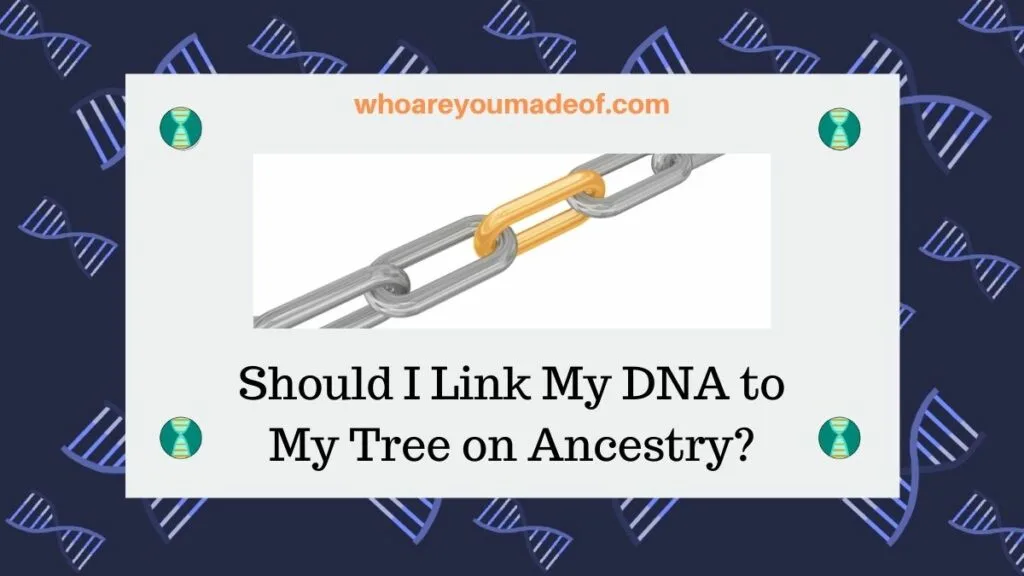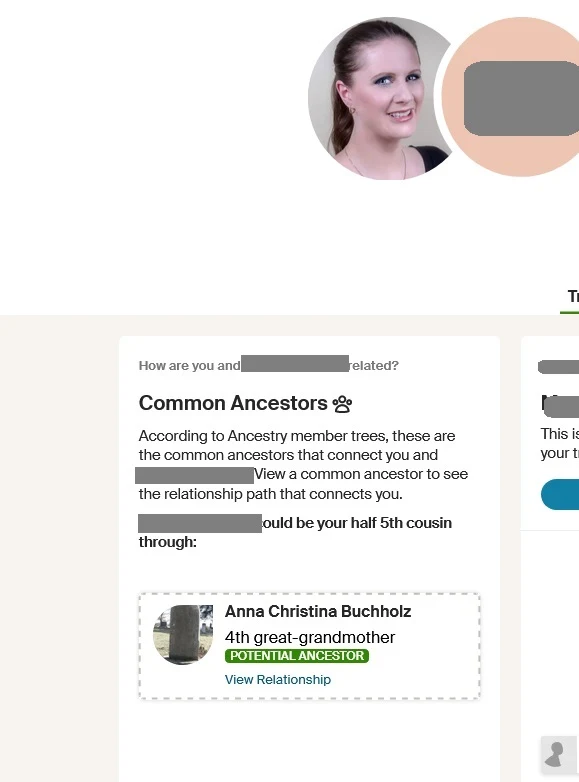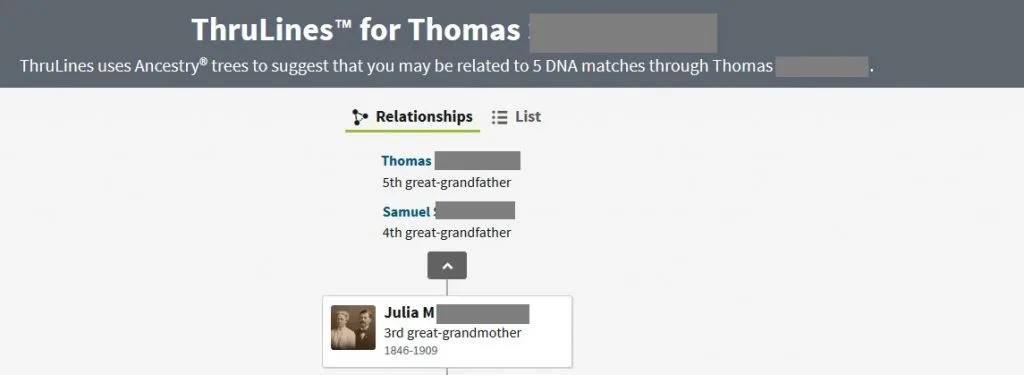Linking your tree to your Ancestry DNA results is a great way to get the most from your DNA test. In this post, I'll explain some of the benefits of attaching your DNA to your family tree.
Attaching your tree to your Ancestry DNA results will allow you to:
- Get Common Ancestor Hints
- Quickly identify surnames shared with DNA matches
- Discover connections to ancestors and DNA matches with ThruLines
- Help others explore their ancestry

In general, I always recommend that my readers consider connecting their DNA with their family tree. It's the best way to take advantage of all of the features that Ancestry offers and leverage the power of having your DNA results and family tree on the same site.
Read below for further explanations about each of these benefits. If you are already convinced you should link your tree to your DNA, you might be interested in reading this post about how to do it.
Linking your tree will help you get Common Ancestor Hints
Let me start out by saying that if you have no tree attached to your results, you cannot get Common Ancestor Hints. These hints are different than the "tree hints" that you see when you are building your family tree on Ancestry. Tree hints give you ideas about documents and other records that might help you learn more information about a particular person in your tree. Common ancestor hints are special hints that compare your tree with the family trees of your DNA matches in order to spot your connection.
Why should you care if you have Common Ancestor Hints? They can:
- help you verify your family tree research
- help you easily determine your exact relationship with your match (see image below)
- assist you in spotting places in your tree where you lack confirmation

This particular Common Ancestor Hint is very interesting to me because I have seen Anna Christina Buchholz, but have not added her to my tree as a 4th great-grandmother. Is she really my ancestor?
It's likely that I am truly related to this particular DNA match, since we share a single 14 centimorgan DNA segment, and therefore are most likely share a common ancestor at some point within the last couple of hundred years. In order to determine whether Anna Christina is really my ancestor, too, I would need to more closely examine the family trees used to determine this Common Ancestor Hint to see if there are supporting genealogy records that back up this conclusion.
Linking your DNA to your tree will help you spot common surnames with your matches
If you and your DNA match both have trees linked to your DNA results, when you visit the match profile, you will see a list of surnames in common. No need to spend endless hours scrolling through your matches looking for common surnames - Ancestry will do it for you, automatically.
In order to see your surnames in common, click on a match that has a public family tree (you can see which matches have trees directly from your match list). Once you are on the match profile page, you can scroll down just a little bit to see shared surnames. While this doesn't always mean that you and your match are related through a surname in common, it's a good starting point. Also, keep in mind that you can be related to your DNA match in more than one way. Crazy, I know!

DNA results linked to trees can get ThruLines
Those who link their DNA results to their family tree on Ancestry might get placed in a ThruLine. This is especially true if you have built your family tree back 4-5 generations on multiple branches of your tree.
Getting placed into an Ancestry DNA ThruLine is, for many, like the "ultimate proof" that you are, indeed, descended from the people from whom you believe you descend. At this point in time, it is a very good indicator as to how likely it is that we are descended from the ancestors who are in our trees.
There is no guarantee that you will get ThruLines, and if you don't get ThruLines it doesn't mean that your tree is wrong. It is, however, a good sign that your tree might be correct up until that point on your line.
A ThruLines will contain people who are DNA matches to you, yet it uses information from the family trees of both DNA matches, those who have not tested their DNA, and those Ancestry users who have tested but do not show up as a DNA match for you. After all, we don't share DNA with all of our relatives.
Furthermore, Ancestry ThruLines also uses information from family trees on Ancestry that are marked as private. We may not be able to see the private family tree, but ThruLines can be calculated using private trees.
This is really very useful because until the ThruLines feature was developed, Ancestry users only had access to public member trees and could not learn from private trees.

Help others explore their Ancestry by linking your results and your tree
One of the most compelling reasons to attach your family tree to your DNA results on Ancestry is that it will help other people who have tested their DNA figure out how they are related to you. Sure, this might not seem like it directly benefits you, but it really does.
Your DNA match might spot your connection and reach out to you to share information that is new to you.
It's very helpful to other Ancestry DNA users when their DNA matches link their trees to their results. It can help them easily spot the relationship, and save you from innocent, yet sometimes frustrating e-mails that go something like this: "Would you like to help me figure out how we are related?".
You can save them the trouble of asking you how you might be related by simply attaching your results to your tree. This way, if they do decide to contact you after all, they will have a much better idea of how you might be related and, perhaps, a more specific question or comment.
Plus, it's just a huge help and a really nice thing to do for your DNA matches - they are family after all!
Conclusion
To really take advantage of these benefits of linking this tree, you'll do good to have an Ancestry subscription, at least while you are actively researching your tree. You can get a two week free trial by using the following link (I'll get a small commission - thank you so much) if you end up purchasing a subscription at the end of your free trial: Ancestry Free Trial
I hope that this post helped you learn a little bit more about the benefits of linking your Ancestry DNA results with your family tree. If you have any questions or comments about anything that you read in this article, I would encourage you to leave a comment below. I hope to hear from you.
Thanks for stopping by!


Claire
Sunday 22nd of May 2022
Hello. Thank you for a very informative article. I recently purchased a DNA kit that i want my brother to use. However I am the family member building the tree and doing the research and want his DNA to be linked on my account. I don’t have a DNA w ancestry and would rather not. I’m having a hard time understanding if my brother needs his own account or can use mine. I hope I’m making sense. Thank you!
Claire
Claire
Sunday 22nd of May 2022
Corrected email address